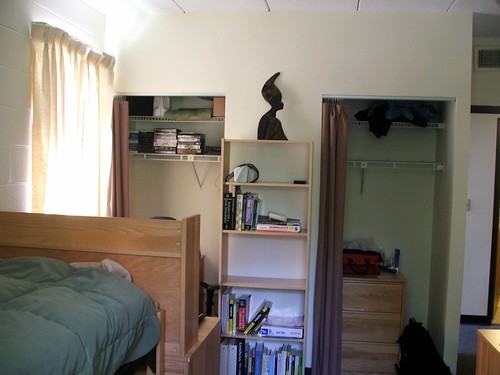The third and final class I’m blogging about is my Entrepreneurial Thinking class. You know how when you’ve got a really good idea fresh in your head, you have that sort of “fire in your gut” as the professor calls it? That’s basically how I feel all class.
I think I’ve been thinking all wrong. Most of my business ideas begin with winning the lottery. One of my ideas is for a sort of two-way radio “superstore,” one right over the NH border and one in Boston. There are all sorts of neat details and I think it’d do really well. But I’d need a few million to start each of them, after you figure in real estate, labor, and carrying a big inventory. There’s a mall I’d like to buy out, revitalize, and make a killing on, but that’s a few more million. I have a lot of ideas that I think would work very well, but almost all of them involve having a ton of capital up front.
The way to do it, I’ve found, is to spend no money. We talked about SkyMall. Anyone who’s flown will recognize their catalogs, a sort of ‘metacatalog’ of all sorts of neat stores. They spent millions starting the business up, setting up a big IT infrastructure, setting up warehouses at airports for instant delivery, and so forth. The catalog companies were selling them the merchandise at substantial discounts, and he was paying just a little bit to the airlines to carry the equipment. The article we read about them ends with him on the verge of bankruptcy. Obviously the story doesn’t end there, because they now seem successful.
So then the professor told us we could start it in class, using only the money we had with us. We’d sort of already established that the real business was acquiring new customers for the catalogs: SkyMall isn’t a retailer, they hook you up with the appropriate retailers and take a cut of the sales as commission for connecting customer and retailer. So we got that step right in class. But then he asked what was next. No one said anything, so I volunteered that we’d then have to get the airlines to cooperate. He asked me how. “I think they did it right. You pay them a small cut of your profit for each sale, and promise to pay them a modest amount if no one buys anything, to cover their costs of carrying the catalogs,” I told him. “Really?,” he asked. There was sort of a silence, since no one else saw what I had missed.
He proposed that we not pay the airlines anything. I couldn’t understand why the airlines would agree, but he explained that in short answer: passengers are stuck in a big metal tube for hours, and it’s up to the airlines to entertain them. You don’t market it as, “Will you please carry my catalog, I’ll pay you?” You market it as, “Hey, why don’t you carry my free catalog to entertain your passengers! That way you don’t have to pay anything!” And there’s no risk to them–at worst they just throw your catalogs away.
So I was reminded of one of my favorite business models ever. For all I know it’s urban legend, but I don’t think so. Some guy found that some industrial process was being left with some sort of waste that was extremely expensive for them to dispose of. They were paying through the nose for someone to dispose of it. The same guy knew that somewhere else, people were looking for that waste, because it actually had uses. (Sort of like the fruits I mentioned from negotiations class, actually?) So he charged for the disposal, but undercut the competition. And, having just been paid to take it, he then sold it to someone else. Rather than the traditional, “Buy and sell at a markup” model, he was charging at both ends. As the Guinness guys would say, brilliant!
But I guess the other aspect is a sort of “organic” growth. Some things might work if you start with millions of capital upfront, but if you can start a business from the spare change on your desk, you really don’t have much to lose. Your real asset becomes your networking capabilities, not your fundraising capabilities.





